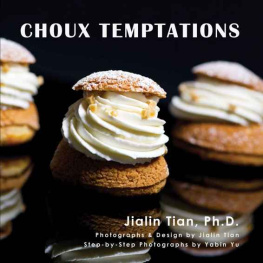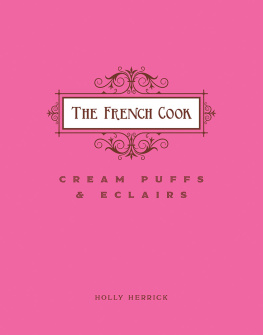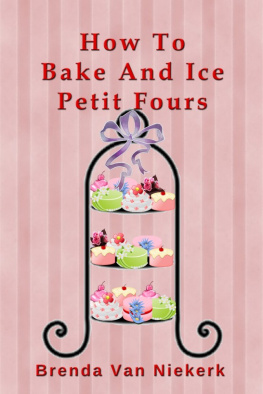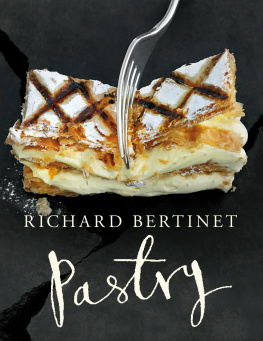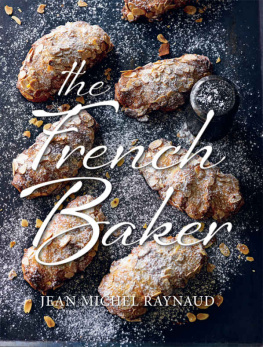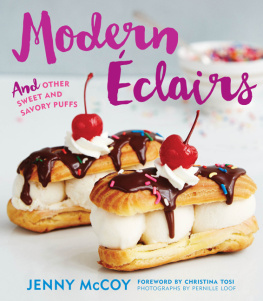Contents
CHOUX TEMPTATIONS
Jialin Tian, Ph.D.
Photographs and Design by Jialin Tian
Step-by-Step Photographs by Yabin Yu
Choux Temptations
Jialin Tian, Ph.D.
Copyright 2013 by Jialin Tian
Photographs copyright 2013 by Jialin Tian and Yabin Yu
All rights reserved. No part of this book may be reproduced or transmitted in any form or by any means, electronic or mechanical, including photocopying, recording, or by any information storage and retrieval system, without permission in writing from the publisher.
Disclaimer: While every precaution has been taken in the preparation of this book, the publisher and author assume no responsibility for errors or omissions, or for damage or loss resulting directly or indirectly from the use of the information contained herein.
Published in the United States by
Jayca Inc.
P. O. Box 2451
Poquoson, VA 23662
USA
Photographs and styling: Jialin Tian
Step-by-step photographs and authors photographs: Yabin Yu
Book design: Jialin Tian
Production manager: Yabin Yu
www.macaronmagic.com
ISBN 978-0-9837764-3-7 (Print Edition)
First Edition
INTRODUCTION
L ight, airy, and crispy, the versatile choux have been delighting pastry enthusiasts for centuries. The word chou(x) means cabbage(s) in French. Baked choux are shaped like cabbages, hence the origin of the name. According to culinary historians, the ingenious choux pastry originated in Renaissance Italy and was later introduced to France by Catherine de Medici. The modern version of the choux pastry was created by famed French chef Antonin Carme in the nineteenth century. Since then, this remarkable baking method has given us beloved French classics such as clairs, profiteroles, Paris-Brest, Religieuses, St. Honors, and more. Today, a new generation of pastry creators continues to dazzle us with an array of innovative choux creations. As the timeless classics are being reinvented, brand new choux pastries are developed to tempt pastry lovers in todays trendy pastry scene.
T his book is a celebration of the beloved choux. The book is divided into five chapters. The first chapter contains the basic recipes that are used throughout the book. The fundamental technique of the dual-cooking process for preparing pte choux (choux paste) is introduced. In addition, this chapter discusses the multi-stage baking approach that helps to solve a common problem in baking choux. In the second chapter, we revisit the techniques for creating some of the best-known French classic choux pastries. In chapter three, we focus on contemporary choux creations. With a variety of techniques, components, ingredients, and textures, these elegant works of art truly showcase the brilliance of the choux pastry. Inspired by the classic Religieuse, in chapter four, we present several whimsical choux characters that are absolute delights. Finally, in chapter five, we demonstrate the versatility of choux pastry in several savory creations. Although most creations in the book employ the traditional ingredients used in the classic preparation method, several recipes in chapters three and five include novel ingredients such as olive oil, oats, and walnut oil in the basic choux preparation to emphasize the healthier aspect of modern pastry.
C houx Temptations contains instructions for creating thirty sophisticated and innovative choux pastries. Each recipe is accompanied by step-by-step photographs as well as photographs of finished works. The complexity of the recipes ranges from intermediate to advanced. I have found the most effective method to tackle a complicated recipe composed of multiple elements is to understand the concept of the component-oriented approach. For instance, if someone can master the techniques for preparing the individual recipes presented in the first chapter, then he or she should be able to handle any of the more complicated recipes in the book. In addition, it is essential to plan ahead; clear organization and detailed scheduling are the keys to success. Furthermore, it is also helpful to read and understand the recipe in its entirety, then try to visualize each step, and finally carry out the procedures.
T his is my fourth cookbook collaboration with my mother, Yabin. As always, she has made tremendous contributions to this work. During the creation of this book, we have grown closer and I have learned to appreciate her more than ever. Always thinking in synchronization, we also discovered that we have so much in common in so many ways other than just in engineering and science. I also want thank my father, Richard, for his valuable contribution and support; together we make a wonderful team. In addition, I wish to express my deepest appreciation to all the pastry professionals and enthusiasts for their precious support, feedback, and encouragement! I could not have done it without you!
Pte Choux

P te choux, or choux paste, is the principal component for making any choux pastry. When properly made, baked choux should be light, airy, and moist on the inside and slightly crispy on the outside. Choux pastries require a dual cooking process. During the first stage, a thick paste is made from flour, liquid, and fat components. In the second stage, eggs are beaten into the cooked paste to produce a thinner paste, which is shaped and baked into the desired form. Steam is the only leavening agent in the choux paste. As the water in the paste evaporates during baking, it creates steam. Because the initial cooking stage activates the gluten, thus strengthening the starch bond in the paste, the steam is trapped inside the paste. As a result, the pastry is lifted to several times its original volume. It is this unique process that gives the choux pastry its signature characteristics. However, sometimes baked choux tend to cave in on the bottom or even collapse onto themselves, which is a common problem caused by rapid air cooling. During baking, the air inside the choux expands as the temperature increases. However, when the choux are removed from the hot oven, the temperature drops rapidly, which creates an imbalance in air pressure between the interior and exterior of the choux. As a result, the choux collapse.
L uckily, this problem can be easily solved. To avoid the cave-in phenomenon in baking pte choux, we employ a three-stage baking process that includes a rapid rising stage, a baking stage, and a gradual cooling period. In the first phase, choux are baked at a high temperature; during this period, the steam in the choux paste helps to increase the choux volume significantly. In the second phase, the temperature is reduced to allow sufficient baking to occur. Finally, in the last phase, the oven is turned off; the choux are cooled gradually to avoid collapse.

